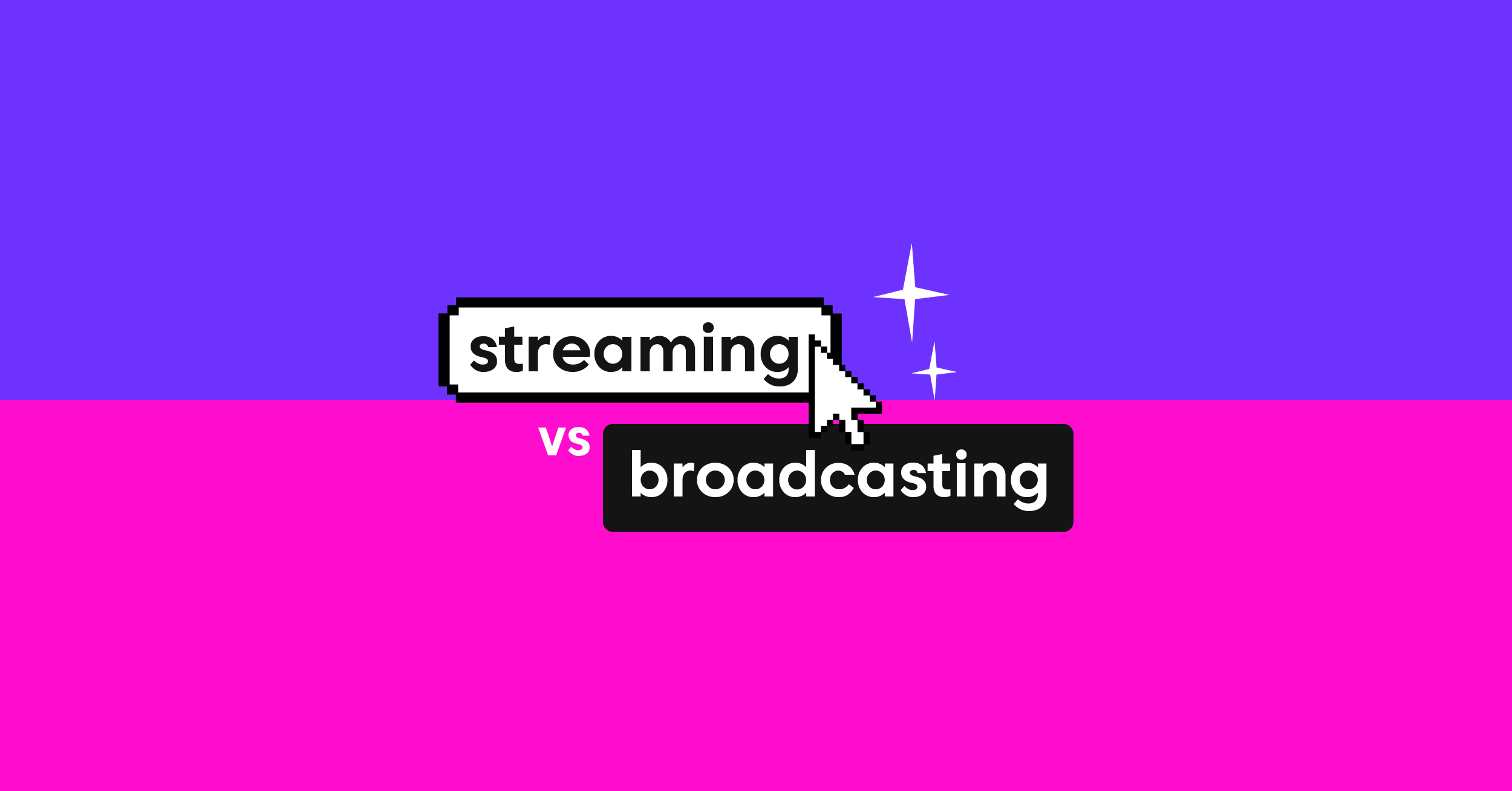WebRTC live streaming is the latest technology for video streaming. It’s been gaining in popularity lately and for a good reason. WebRTC offers many advantages over traditional video streaming technologies. It ensures ultra-low latency streaming with high quality. In WebRTC streaming technology, the media data is sent directly from one browser to another without going through an intermediary server. It dramatically reduces latency and enables real-time communication. Since the media data is not stored on any server, WebRTC is more secure and private than other video streaming technologies. Video streaming using WebRTC in HTML5 is currently supported by all major browsers, including Google Chrome, Mozilla Firefox, Opera, and Microsoft Edge. Many companies and organizations rapidly adopt WebRTC broadcast technology for their video streaming needs.
This blog post will guide you to WebRTC live video streaming. Let’s get started!
What is WebRTC?
There are many different types of video streaming protocols. These protocols have their advantages and disadvantages. WebRTC is one of the latest and most advanced video streaming protocols. It is a free user datagram protocol (UDP) and open-source project that enables real-time communication. Live streaming using WebRTC started gaining popularity in late 2015. This is because all major browsers started supporting this protocol. Besides, low latency is one of the key attributes of WebRTC streaming that attracts many people to use it for their video streaming needs.
How does WebRTC Work?
WebRTC is a browser-based platform that allows real-time communication between users. It includes an API that can be used to build applications such as conferencing apps for voice and video calls and live streaming. WebRTC uses various technologies to achieve its goal of real-time communication, including Peer-to-Peer (P2P) networking and codecs. P2P networking ensures a direct connection between two users without needing a media server. This reduces latency and makes for a more efficient peer connection. Codecs are used to encode and decode audio and video data.
WebRTC uses the VP8 and H.264 codecs for video processing and the Opus codec for streaming audio data. These are open-source video codecs explicitly designed for real-time communication. WebRTC also uses encryption to ensure the privacy of its users. These technologies combine to make WebRTC a powerful tool for real-time communication.
Advantages of WebRTC over other technologies
WebRTC (Web Real-Time Communication) is a technology that enables real-time peer-to-peer audio and video communication in the web browser without the need for plugins. WebRTC is available in all major browsers, including Chrome, Firefox, Safari, and Edge. It is an open standard developed by the World Wide Web Consortium (W3C) and the Internet Engineering Task Force (IETF). The benefits of WebRTC are many. These are:
- The most obvious is that it allows for real-time communication without needing plugins or third-party software. This means that users can communicate with each other directly in the web browser with no need to install additional software. Additionally, since WebRTC is an open standard, it is supported by many devices and browsers. This means that users can communicate with each other regardless of their operating system or browser.
- Another advantage of WebRTC is its low latency. Latency is the time it takes for a signal to travel from one point to another. For example, if you are talking to someone on a video call, there will be a slight delay between when you speak and when they hear you. This delay is known as latency. WebRTC has very low latency, meaning there is minimal delay between when you speak and when the person you are talking to hears you. This makes video chat more natural conversation and helps to reduce misunderstandings.
- Finally, WebRTC is secure. Data like the video element and the audio signal transmitted using a WebRTC streaming platform is encrypted end-to-end using Transport Layer Security (TLS). This means that your video streaming workflows cannot be intercepted or dropped on as it travels between your device and the person you are communicating with.
WebRTC provides several advantages for real-time streaming and communication. Its low latency and encryption make it well-suited for video conferencing and online gaming applications. And its lack of need for plugins makes it easy to use without having to install additional software. With these benefits, it is no wonder that WebRTC is becoming increasingly popular for real-time streaming and communication.
Drawbacks of WebRTC Streaming
While WebRTC streaming offers several advantages, there are also a few drawbacks. One of the main concerns is that WebRTC is a peer-to-peer protocol, which means data is exchanged directly between users without passing through a central server. This can be a security risk for streaming media. Since WebRTC protocols transmit live streams directly, tracking and monitoring data transmissions is more complicated.
Additionally, WebRTC streams don’t ensure adaptive bitrate streaming. Your live streams can be disrupted by technical problems such as poor internet connections or browser compatibility issues.
Finally, because WebRTC is still a relatively new technology, finding support or troubleshooting help can be difficult if you encounter problems using it. Despite these potential drawbacks, WebRTC streaming remains a popular choice for many users due to its convenience and flexibility.
Let’s Wrap it up
Though WebRTC streaming has a few potential drawbacks, its advantages make it a popular choice for many users. Low latency and lack of need for plugins and supporting multiple web browsers are the main reasons people choose to use WebRTC for streaming. Additionally, its encryption ensures that data transmissions are secure.
When you are a Castr user, you don’t need to worry about streaming concerns. We serve you with various live streaming protocols and Multi-CDN strategies to help you deliver your live content with the best quality and reliability. With Castr, you can focus on your content, and we will take care of the streaming!








